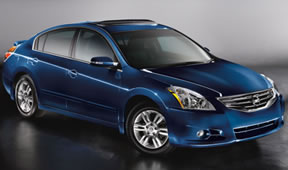By sales, GM ranked as the largest U.S. automaker and the world's second largest for 2008.[5] GM had the third highest 2008 global revenues among automakers on the Fortune Global 500.[6][5] GM manufactures cars and trucks in 34 countries, recently employed 244,500 people around the world, and sells and services vehicles in some 140 countries.[5]
On June 1, 2009 General Motors filed for Chapter 11 bankruptcy proceedings from which it emerged on July 10, 2009 in a reorganization in which a new entity acquired the most valuable assets. GM is temporarily majority owned by the United States Treasury and to a smaller extent the Canadian government,[3][7][8] with the US government investing a total of US$57.6 billion under the Troubled Asset Relief Program.[9]
While no GM shares are currently available to the public, the company plans an initial public stock offering (IPO) in 2010.[10]
GM plans to focus its business on its four core US brands — Chevrolet, Cadillac, Buick, and GMC. In Europe, following a period of negotiation to sell a majority stake in its Opel and Vauxhall brands, GM decided to retain full ownership of these operations.[11]
On January 26, GM announced that it had reached an agreement to sell SAAB to Spyker Cars NV. GM also has an agreement to sell its Hummer brand, awaiting Chinese regulatory approval, while winding down its Pontiac and Saturn brands as they remain under the old GM, now known as Motors Liquidation Company.
 | |
| Type | Limited Liability Company |
|---|---|
| Founded | Flint, Michigan (1908) |
| Founder(s) | William C. Durant |
| Headquarters | Renaissance Center Detroit, Michigan, United States |
| Area served | Worldwide |
| Key people | Edward Whitacre, Jr. (Chairman and CEO)[1] |
| Industry | Automotive |
| Products | Automobiles |
| Revenue | ▼ US$ 148.979 billion (2008)[2] |
| Operating income | ▲ US$ US$ 21.284 billion (2008)[2] |
| Net income | ▼ US$ −30.9 billion (2008)[2] |
| Total assets | ▼ US$ 91.047 billion (2008)[2] |
| Total equity | ▼ US$ −86.154 billion (2008)[2] |
| Owner(s) | United States Department of the Treasury (61%) United Auto Workers Union Voluntary Employee Beneficiary Association (17.5%) The Crown in Right of Canada (7.9%)[3] The Crown in Right of Ontario (3.8%)[3] Bond holders of Motors Liquidation Company (9.8%) |
| Employees | 244,500 (2009)[4] |
| Divisions | Buick Cadillac Chevrolet GM Daewoo GMC Holden Vauxhall Opel Wuling |
| Subsidiaries | OnStar |
| Website | GM.com NOTE: SOURCE WIKIPIDIA |


